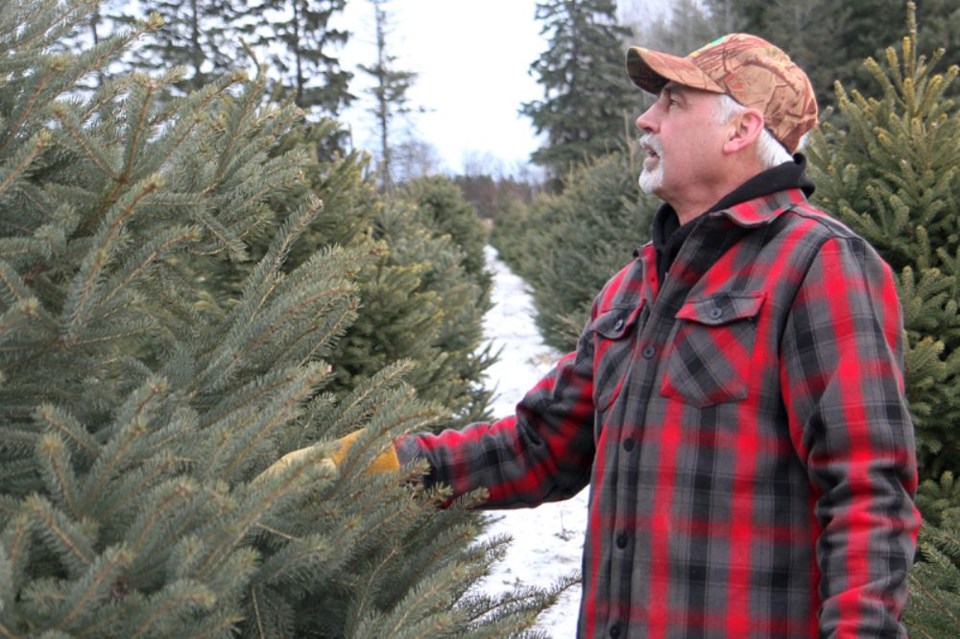THUNDER BAY -- John Hanna is trying something different when growing Christmas trees.
This year he started growing legumes such as peas and beans in the midst of the Christmas tree plots as part of a collaborative experiment with the Thunder Bay Agricultural Research Station and Lakehead University.
Hanna, a Slate River Valley farmer who also has fields of wheat, barley, canola and soybean in addition to the trees, said any kind of advancements from research are valuable in a competitive industry.
“It’s important because if we don’t move ahead we’re just going to stand still. Research and applied research on farms can cut down costs, increase productivity and it reduces the risk of single crop farming,” he said at his farm on Sunday.
“This is the first time this has been done.”
While he said researchers are still analyzing the data from soil samples early indications are that it has been a successful project.
The experiment might be tested on a larger scale next year.
“Legumes produce nitrogen from the air so they can add that to the soil as a growth hormone without the farmer adding any costing nitrogen from the retailer,” Hanna said. “It cuts down on the cost of fertilizer and makes the trees grow healthier and faster.”
Running a Christmas tree farm takes a great deal of patience and commitment, as the trees can take about 10 years to grow before they are ready to be cut down and decorated.
The early stages are trickiest, as the seedlings are just a few inches off the ground and have to contend with weeds.
Growing a crop that protects the trees while creating value is a bonus on two fronts.
“We have to maintain that space between the trees, especially when they’re small, because the grass and weeds will choke them out. Now if we plant legumes in there and cultivate them we get a crop that’s sellable and provides ground cover and protects the trees,” Hanna said.
